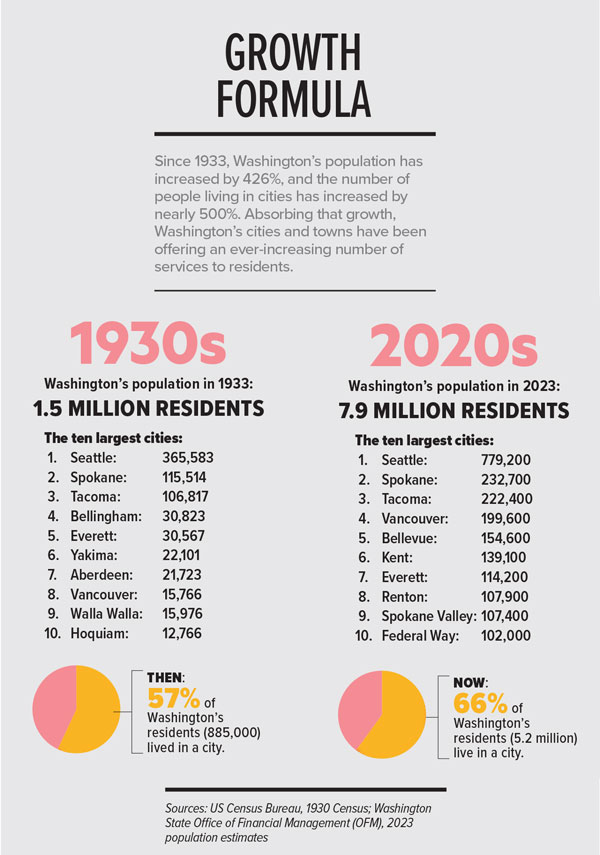Sequim grows its economy (and population) by leveraging the heritage and history of farming and embracing tourism.
By Allyson Meyer
The City of Sequim is a place uniquely blessed. Sandwiched between the Dungeness River and Sequim (pronounced “Skwim”) bay on the banks of the Salish Sea in the rain shadow of the Olympic Mountains, precipitation-wise it more closely mirrors Los Angeles than Seattle. Within this arid microclimate, Sequim’s past, present, and future are intrinsically linked to the land.
“One of the things that attracted me to this job was how rural and pristine Sequim is,” says City Manager Matthew Huish. “To hear about its agricultural history adds to the beauty. We’re surrounded by the mountains, the strait, the bay. And we’ve got these beautiful pastoral farmlands all around us.”
Sequim’s agrarian heritage is celebrated each year in uncommon fashion, drawing thousands of tourists to quaint Clallam County for festivals and special events. Some never leave.
The Sequim Irrigation Festival traces its roots back to 1896, when the city first celebrated the prowess of D.R. “Crazy” Callen, who diverted water from the Dungeness River to farmland on the parched prairie. With parades, car shows, arts and craft fairs, and a pancake breakfast (dubbed “Crazy Days”), Washington’s longest-running festival still brings more than 6,000 visitors to Sequim for 10 days each May. But that success story pales in comparison to Sequim Lavender Weekend, when an estimated 30,000 people converge on the “Lavender capital of North America,” doubling the population of the Sequim Dungeness Valley for three days on the third weekend in July.
The inaugural event was held in August 1997, two years before the completion of an $18 million 4.7-mile bypass that promised to siphon traffic, and tourists, from the town center.
“The lavender industry here was really born when the Washington State Department of Transportation decided to build the 101 bypass, because Highway 101 used to come right through downtown Sequim,” explains Barbara Hanna, Sequim’s communications and marketing director. “There was a community effort through the Chamber of Commerce to start brainstorming ideas to make Sequim more of a destination and put it on the map.”
Drought-tolerant lavender was the solution, and the industry has flourished. In its first year, five local lavender farms were represented in the festivities. Now, almost three decades later, the number has grown to 18 participating lavender farms hosting tours, a namesake festival with a beer garden, street fair, food court, and live music by local bands like FarmStrong.
A desire to experience “small-town Americana at its best” helped Sequim bounce back from the impact of the pandemic, she adds, when, after a two-year hiatus, the festival drew record crowds in 2022, and the permanent population increased from 8,032 to 8,319 as more than a few decided to stay for good. For Huish, it all comes down to the city’s lesser-known motto (be kind) and its belief in being, as he puts it, a “small community of kindness” where locals and visitors come together to experience the beauty that is Sequim’s history.
“That’s the fun of living here and being here,” he says. “There’s a charm that is unique to a rural community surrounded by natural beauty.”
For more information: sequimwa.gov
